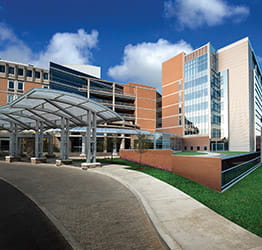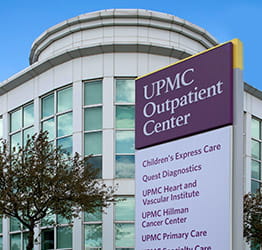On this page:
What Is a Craniofacial Malformation?
Craniofacial is a term for the bones of the head and face. Doctors define craniofacial malformations as a disability or injury caused when bones of the skull and face fuse too early. Bones that join incorrectly can affect features of an infant's face and head.
Sometimes referred to as craniofacial anomalies, these health problems range in severity.
Examples include cleft lip and palate to congenital growths and tumors.
Some issues are very complex, including illnesses in which the bones in the skull and face fuse wrong.
When severe, they can also squeeze the brain due to not allowing enough space for the brain to grow. This can cause the brain to have a high pressure, known as intracranial pressure (ICP).
These are some of the most common structural congenital disabilities. The treatment approach for each issue differs based on how severe it is.
What causes craniofacial malformations?
Craniofacial malformations often are the result of genetic issues.
They're often associated with changes in growth or function, such as:
- Abnormal brain growth.
- Hearing loss.
- Trouble with breathing, chewing, swallowing, and speech.
Back to top.
What Are the Symptoms of a Craniofacial Malformation?
With craniofacial malformations, doctors and parents can usually see the change. This is unlike other brain issues where symptoms happen inside the body.
Many illnesses fall under this umbrella, each with symptoms that can affect the face and head.
They include:
- Cleft palate. With a cleft palate, tissue from the roof of the mouth and the lips don't fully close during pregnancy. It causes a split in the lip and roof of the mouth.
- Craniofacial dysostosis or Crouzon's syndrome. This happens because of an abnormal or early fusion of the fibrous joints between certain skull bones. It alters the shape and growth of the skull because the bones can't expand as they need to.
- Craniosynostosis. This is when a baby's skull bones fuse too early. It can cause the face and head to change shape or not appear symmetrical. Surgeons can often treat it through a small incision in the scalp using cameras called endoscopes.
- Deformational plagiocephaly. This means a baby's head has a flat spot on one side or the back of the head. It usually happens because of how the baby sleeps. Changing their sleep position can help, or doctors can correct the flat spot with a helmet.
- Encephaloceles. The neural tube is part of the embryo that forms the brain and spine. Encephalocele occurs when the neural tube doesn't fully close during pregnancy, causing brain tissue to protrude through the opening. It causes a groove in the head, either at the base or between the nose and forehead. The hole in the skull can get larger if not fixed. It can cause brain fluid to leak out, which may lead to a brain infection or meningitis.
- Facial hypoplasia. This often affects the middle of the face (midface hypoplasia). Some or all of the bones making the jack, cheeks, and eye sockets fail to grow at a normal rate.
- Hemifacial microsomia. This means tissues on one side of the face have not fully grown. The eye, cheekbone, lower jaw, facial nerves, muscles, and neck may look asymmetrical. They may be a different size and shape than the other side of the face.
Back to top.
How Do You Diagnose a Craniofacial Malformation?
Doctors can diagnose changes to the bones of the face and skull using imaging, such as:
- CT scans.
- MRI scans.
- X-rays.
Back to top.
How Do You Treat Craniofacial Malformations?
Treatment for craniofacial malformations depends on how the bones of the skull and face have changed.
Treatments can include:
- Helmet therapy (to help shape the head).
- Speech therapy (to help with speaking, chewing, and swallowing).
- Working with an audiologist to fit hearing aids for problems that affect the ears.
Your doctor may suggest surgery for problems affecting appearance or brain function.
Surgery on the bones of the face and head corrects congenital disabilities of the skull or bone and neck injuries. Brain and plastic surgeons work together for these surgeries to remove and reshape parts of the head and face.
People need to undergo general anesthesia for these surgeries. For some issues, doctors may be able to do minimally invasive surgery using a small incision — about 1 inch.
The doctors use cameras called endoscopes to perform the surgery. They use special surgical tools that allow them to correct the deformity in many cases without open surgery.
It's crucial to have surgery when the baby is as young as possible. This increases their chance of having minimally invasive surgery. Older children may need open surgery.
Innovative surgery for craniofacial malformations and anomalies
UPMC surgeons use the endoscopic endonasal approach (EEA) for certain issues with the bones of the face and head.
Surgeons use this approach to operate on the base of the skull and the top of the spine. They access these body parts through the nose and sinuses. EEA avoids cuts to the face or head.
EEA offers:
- No cuts to heal.
- No external scars.
- Shorter recovery time.
In others, surgeons use an endoscopic cranial approach through a small incision on the top of the head.
This approach offers:
- A very small incision.
- Less blood loss than open surgery.
- Much shorter stays in the hospital (typically one to two days).
Back to top.
















